The content of the article
- 1 Factors Affecting Cat Recovery After Sterilization
- 2 Care for the cat immediately after sterilization
- 3 Cat maintenance and nutrition after sterilization
- 4 Cat after sterilization: stitch care
- 5 Possible cat complications after sterilization
- 6 Cat behavior after sterilization
- 7 Video: how to help a cat after sterilization
Owners of cats are increasingly thinking about sterilizing their pet in order to maintain health. A qualified doctor will not allow postoperative complications and will devote the owner to all the details of caring for the animal. However, there are cases when, for certain reasons, the veterinarian did not provide the owners with basic information. Then the question arises sharply, how to care for a cat after sterilization.
Factors Affecting Cat Recovery After Sterilization
Sterilization is a basic operation that an experienced specialist can do. To understand how long the cat will recover, study the basic aspects.
- The most important thing is a timely appeal to a specialist. If you sent the animal for sterilization on time, taking into account the recommendations of the doctor, then the pet will recover quickly. The optimal period is the time at which the cat has not yet had estrus, pregnancy and childbirth. In this case, the tissue will recover in a short period.
- Rehabilitation depends on the age of the cat. Young individuals have good health, unlike older ones. In cats up to a year, all metabolic processes are at the optimum level. If you fed the animal well, did vaccinations and gave vitamins, there should not be any problems with rehabilitation.
- The qualification of a veterinarian matters. For sterilization, you need to contact only surgeons who have sufficient knowledge. An experienced doctor will perform an operation with a minimal rupture of tissues, correctly suture. These aspects will lead to rapid healing of wounds.
- The restoration of the animal after sterilization also depends on the care that the owner will give the cat. If you strictly follow the recommendations of the veterinarian, timely process the stitches, feed and water the cat, the duration of the rehabilitation will be reduced to a minimum.
- If the cat had any health problems, complications may arise after sterilization. An increase in body temperature, consumption of sutures, and other ailments will increase the duration of recovery.
Care for the cat immediately after sterilization
- Extract. It is important to take full care of the animals in the first hours after surgery. There are clinics that take the animal out of anesthesia, then in the awakened state, transfer it to the owner. However, more and more doctors prefer to "discharge" cats from the clinic in a state of narcotic sleep. In the latter case, the surgeon must give advice regarding care.
- Warmer. Being under anesthesia, the animal's breathing will increase, but the pulse will become slower. In this case, the body temperature will drop by 2-3 degrees. In this condition, the pet is susceptible to sudden changes in temperature, as well as drafts and cold. If you sent the animal for surgery in the winter or autumn, take care of an additional heating pad. From the back, place a bottle of warm water. Throughout the transportation, make sure that the container does not move to the surgical wound. Otherwise, heat will cause bleeding.
- Transportation. Take care of the hard-bottom carrying bag with which you will transport the cat. Line a disposable diaper in the cavity, put a soft cotton cloth (a sheet folded in several layers) on top of it. Put the animal in the bag. It is important that the pet lies on its right side. Cover it with a blanket or a warm blanket.
- Arrival home. Once you arrive at your destination, leave the animal in the carrier (if there is enough space in the bag). In other cases, lay a disposable diaper and a warm substrate (cloth) on the floor away from drafts. Do not leave the cat in places with a hill and too elastic surface (bed or sofa).
- Awakening. The cat was anesthetized all along the way home. The way out of a sleeping state depends on a number of aspects, such as the type and dose of anesthesia, the individual characteristics of the body, the body weight of the pet, etc. Speaking on average, the cat wakes up in 2-8 hours. At this time, it is important to constantly monitor your pet. After moving away from sleep, the cat will unconsciously move, jumping or running away. To prevent the animal from getting injured, choose a completely safe place for the cat.
- Eye care. After surgery, the veterinarian must give clear recommendations regarding animal care. The thing is that with anesthesia, the eyes of cats remain open. It scares some owners, but be patient. To prevent drying of the cornea, gently close the eyelids of the pet with a frequency of 1 time in 30 minutes. You can do a light massage for centuries with eyeballs or drip cat droplets (from drying out).
- Massage. Throughout the duration of anesthesia, a cat should not be given water or food through force. If sleep continues for too long, gently massage the animal’s paws and pads. Thus, you accelerate the circulation of blood throughout the body of the pet and prevent the flow of limbs.
Cat maintenance and nutrition after sterilization
- When the pet moves away from anesthesia, she will begin to move more confidently. Offer your cat a meal, provide round-the-clock access to clean water.
- As for food, give the animal a special premium food with the appropriate mark "for sterilized cats." As a rule, the appetite returns to the end of the first or the beginning of the heap of the day following the operation.
- Some animals feel sick after the first meal. Thus anesthesia is reflected. After 2-3 days, the cat will regain its appetite, digestion will normalize.
- Doctors do not always give owners recommendations regarding feeding. In the early days, treat your pet with food for animals that have undergone surgery. If the cat previously ate regular food, increase the content of milk and boiled vegetables in its diet.
- Watch how often the animal defecates. If the cat has constipation (she does not go to the toilet for more than 3 days), treat the pet 4 gr. liquid paraffin. It is impossible to put enemas or water a cat laxatives without consulting a doctor. If constipation does not go away after taking the oil inside, consult your veterinarian.
- Many experienced doctors put on a blanket on a cat, which prevents the licking of the wound by the animals themselves. Also, the device protects the wound from dirt. After sterilization, blankets are allowed to be removed when the wound has completely healed. Too "meticulous" cats (constantly licking themselves) take 10-12 days, all the rest 3-9 days.
Cat after sterilization: stitch care
- Keep a close eye on the postoperative suture of the animal. Ask your veterinarian how to handle the slice. As a rule, it is necessary to wash the seam with aluminum spray. In this case, additional drugs are not required.
- If the doctor said that the treatment of the suture is necessary, spend it after 2-3 days after the operation. To make the wound heal quickly, use an antiseptic. The usual "green", hydrogen peroxide or chlorhexidine, betadine, levomekol will do.
- In the first days after surgery, the seam may slightly swell, redden or become shiny, such phenomena are considered the norm. Often from the wound oozes oozing (translucent liquid).
- The duration of suture healing depends on a number of aspects.This includes the individual structure of the animal’s tissues, the skill of the veterinarian, postoperative care, etc. If we take the average value, the section is delayed after 10-12 days.
- Close attention is paid to the suture on the fifth day of antiseptic treatment. It is important that the edges do not diverge for a distance exceeding 1 mm. Also, the wound should be dry, without pus and other fluid.
- Many doctors practice sterilization, in which the suture is applied using absorbable material. Such threads do not need to be removed. If you want to carry out the removal procedure on your own, learn about the manipulations in more detail from the doctor.
- The technique is not difficult. You need to know how many stitches have been sutured. Arm yourself with tweezers and scissors, sterilize tools. Pull the knot with tweezers, cut one thread with scissors. Gradually dispose of residual material.
Possible cat complications after sterilization
Sterilization is not always easy. Unfortunately, in 20% of cases, postoperative complications are observed, which entail serious consequences.
You need to be wary of having the following symptoms:
- The cat’s lack of appetite for 4-5 days after surgery.
- Elevated body temperature (39.5 degrees) on the fifth day after sterilization.
- The apathy and drowsiness that accompany the cat in the first 5 days.
- Swollen, red, bleeding, swollen suture on the fifth day after the intervention of the surgeon.
- Unbearable pain in which the cat "yells" constantly.
The above signs suggest that rehabilitation is not going as well as it should. Consult your surgeon for advice.
Cat behavior after sterilization
- Many furry pet owners believe that after surgery, the cat will become lethargic, fat, not cheerful. However, such deep statements are extremely erroneous. Sterilization has a positive effect on animal health and sexual behavior.
- So, after 1.5-2 months, the hormonal background of the cat returns to its usual mark. It is significantly stabilized by reducing hormones, which from now on remain at a minimum level.
- It is after this that the owner can notice the changed behavior of his furry girlfriend. The cat spends more time with household members, demanding affection. She is less alone.
- The darling will not be tormented because of constant sexual instincts. The cat is more playful and susceptible to humans, trying to be near.
- If you previously had a question regarding the second pet sharing, you can carry out the plan after the full rehabilitation of the first pet. The cat will be playful, friendly and caring towards a new member of the family.
If sterilization takes place in the cold season, take care of the plaid and heating pad for the cat. Upon arrival home, do not place the operated pet on high surfaces, give it a place on the floor. Watch your eyes, provide round-the-clock access to water. Buy food marked "For sterilized cats", promptly rinse the seam. At the slightest sign of complications, take the animal to the veterinarian.
Video: how to help a cat after sterilization

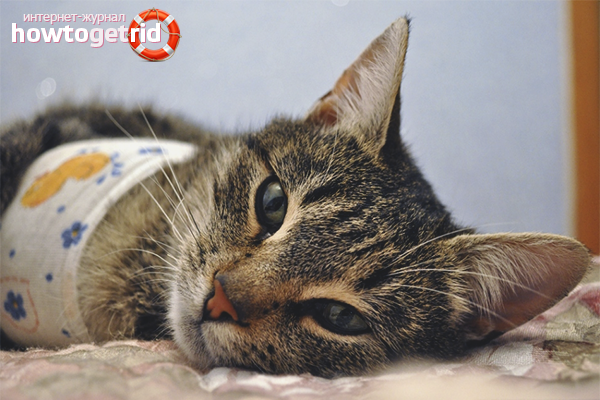
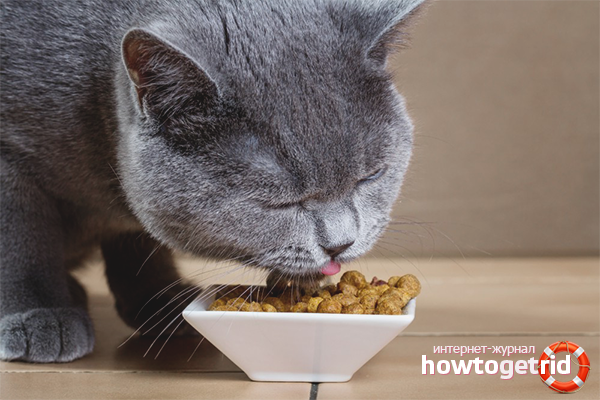




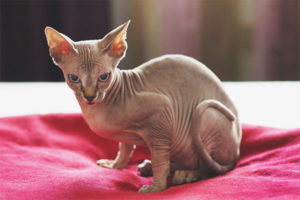
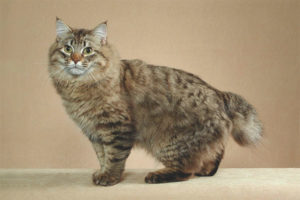
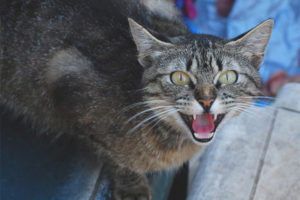
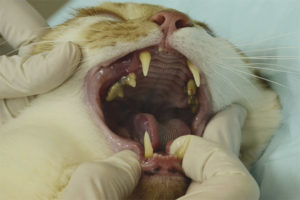
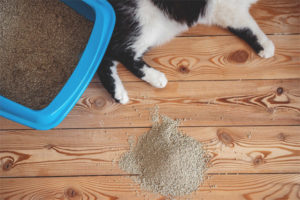
Submit